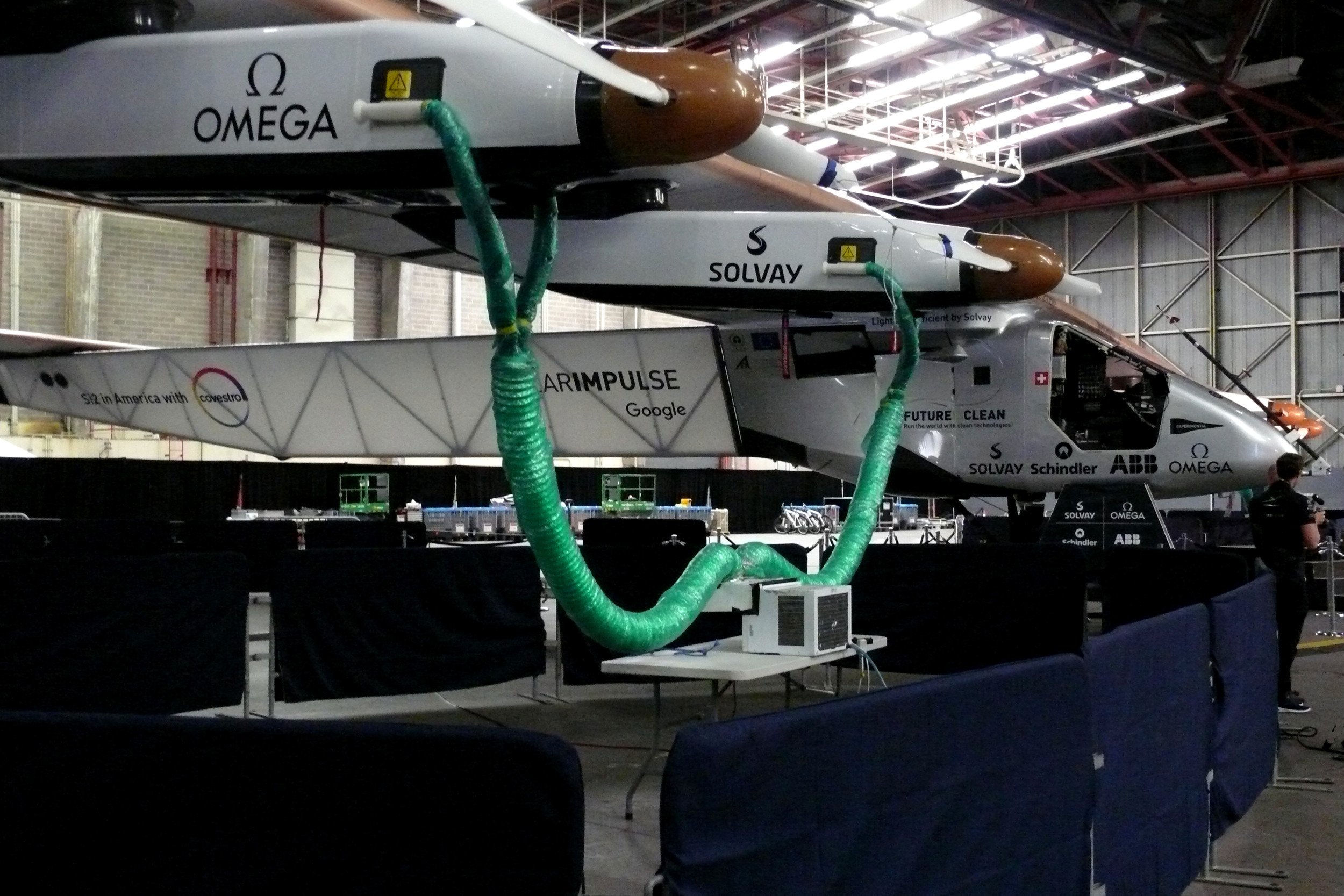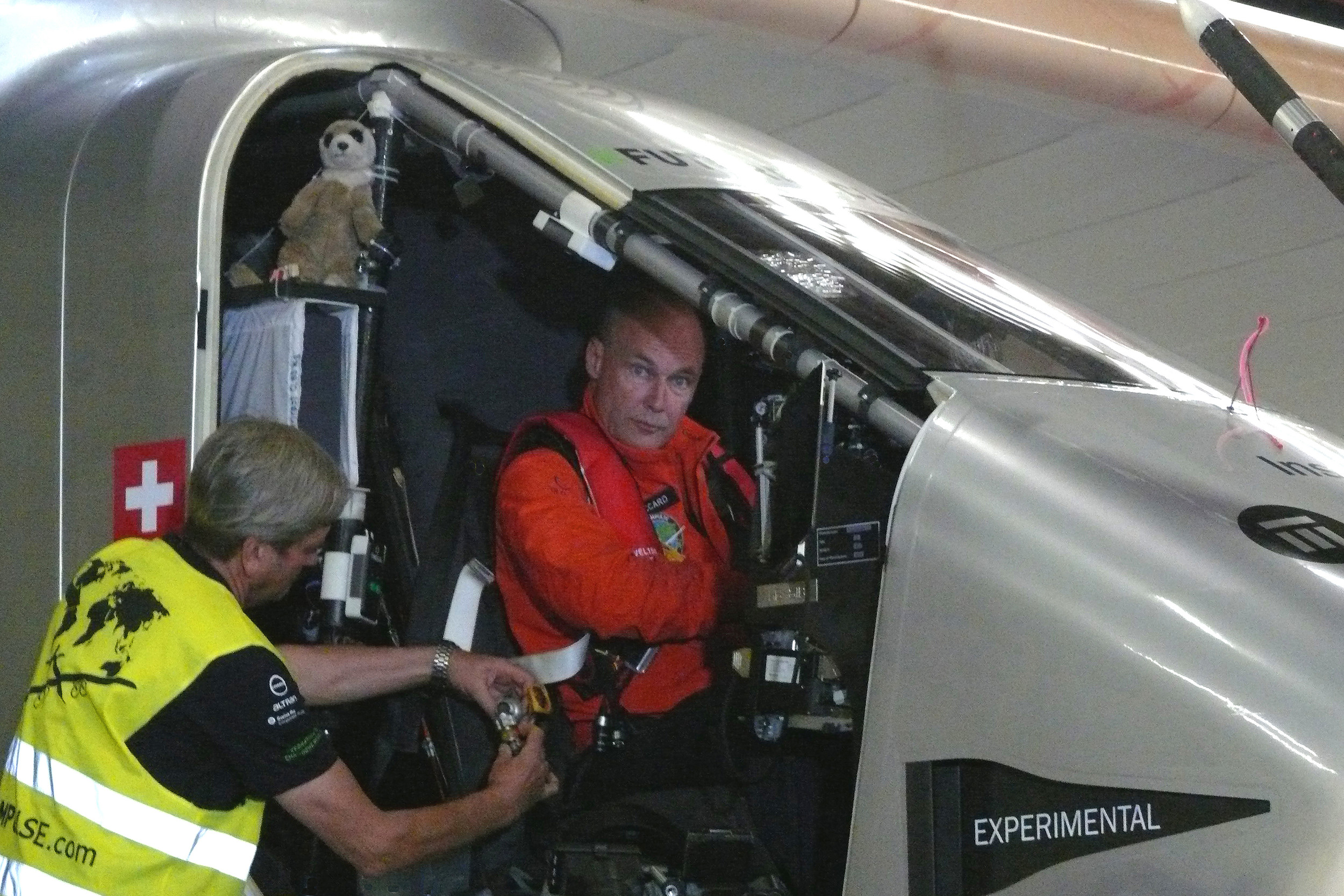Eyewitness to solar aviation history

Island Park resident Joseph Abate was one of only two newspaper photographers allowed to see and photograph the Solar Impulse 2, the first Round-The-World Solar Flight, on its New York stop. Only the sun, with no fuel or polluting emissions, powers the solar airplane. On June 14, the pilots of the project, Bertrand Piccard and Andre Borschberg, offered a toast at a special event in Hanger 19 at John F. Kennedy airport before taking off for Seville, Spain.
“People who think their everyday worlds are important and somewhat hair raising should consider what it would be like to fly an experimental plane for three days without sleep and a deep desire to change the public’s perception of air travel and their future use of solar energy,” Abate said. "I met such a person in my travels to photograph the Solar Impulse 2 aircraft at JFK airport on June 20th. The pilot Bertrand Piccard suited up in front of me to become in my heart forever a true 21st Century aviation hero. I saw him look at the plane at the pre-flight check and he was extremely thorough about the structural integrity of the plane, which is as long as a 747 airliner.”
In 2015 the Solar Impulse 2 completed the first leg of its Round-The-World Solar Flight, from Abu Dhabi to Hawaii, using only the power of the sun. It achieved the longest solo solar flight ever in aviation history.
The plane, which is slowly making its way back around the world to Abu Dhabi, has two pilots that take turns. The Atlantic hop was Bertrand Piccard’s longest flight in Solar Impulse 2. André Borschberg, who piloted the agonizingly drawn-out Nagoya-to-Hawaii leg, still retains the record for longest ever solo flight, 5545 miles over 117 hours and 52 minutes back in July 2015.
The flights take such a long time because Solar Impulse 2, as the name suggests, is completely powered by sunlight. The plane’s massive 236.22 foot long wings, broader than a 747’s 196 feet, are covered in some 884.19 square feet of photovoltaic cells. During the day, the cells power four 14kW, 17.4 hp electric motors and top-up four 41kWh lithium-ion batteries. During the evening, the motors are driven by the batteries. Max cruise speed when the sun is up is 49 knots or 56.3 mph, and a rather languid 33 knots or 38 mph at night.
The solar cells don’t quite refill the batteries during the day, which means the plane can’t fly forever just yet. Max flight duration is somewhere around five to six days.
For power-saving reasons, the Solar Impulse 2 cockpit can only carry a single human, and is both unheated and unpressurised. The pilots do sleep while they’re up in the air, but usually just for 20 minutes at a time, the telemetry data for one flight showed 10 catnaps of 20 minutes over a 24-hour period. Now multiply those conditions by a continuous flight time of three or four days and you have some idea of the rigors that Piccard and Borschberg must go through.
“The Atlantic is the symbolic part of the flight,” Piccard said. “It is symbolic because all the means of transportation have always tried to cross the Atlantic, the first steamboats, the first airplane, the first balloons, the first airships and, today, it is the first solar-powered airplane.
“But the goal is not to change aviation, as Charles Lindbergh did, but to inspire people to use (renewable) technologies and show people they can use these technologies every day to have a better quality of life.”
Abate said Picard spoke of the dangers of the endeavor. “He said it was important for man to go beyond his fears. He smiled and he said, ‘from the beginning man must take risks for society to be better!’”
“As he taxied out to the runway, the flight was still in review as the most current weather conditions were being reviewed before he got the GO signal,” Abate said. “I stood on the side of the runway for over an hour wondering if his lift off would take place. Then, with a change in the front lights on the plane and the blowing of the ground crew siren, we were aware the flight was a GO after 2 AM that night.
The electric engines (previously powered up by the day’s solar energy) started to whirl with a high-pitched whine. The plane in the darkness moved down the runway at a very slow speed (between 30 -60 miles/hr). Then, as if it was a kite, this craft took to the air in a very steep climb. It moved higher and higher and as it leveled off it was straight above us. We could see the LED lights all around the craft.”
Solar Impulse 2 landed in Seville, Spain, completing the world’s first solar-powered crossing of the Atlantic. The 4,200-mile flight took just shy of three days taking off June 20, arrived June 23, after two days, 23 hours and eight minutes.
“I left the airport that night after 3:30 a.m. and I thought will I ever cross the Atlantic in a passenger plane powered by solar energy?” Abate said. “I answered myself by thinking if Piccard can do it then we all someday will reap the benefits of his adventure across the Atlantic. I looked up into the darkened 3:30 AM sky and I smiled.”
The plane departed Seville Monday morning at 12:20 Eastern Daylight Time, and is expected to land in Cairo in 50 hours 30 minutes. Andre Borschberg is piloting this leg of the trip.

 60.0°,
Mostly Cloudy
60.0°,
Mostly Cloudy 




